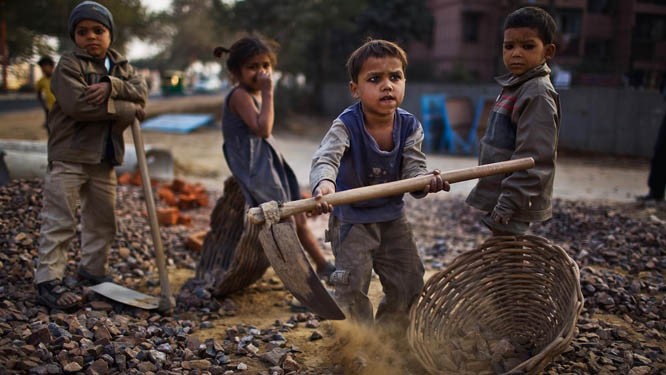
Education managers will have to look into the root causes leading to such a humongous number of out of school children

After successful plantation drive throughout the country, we need to launch yet another drive -- enrolment in schools drive. A recent report compiled by the federal Education Ministry presents an alarming picture of primary education in all four provinces of Pakistan. Nearly 51.5 million children in Pakistan are between the age of 5 and 16 of which as much as 23 million, majority female, are out of schools.
This means that 44 per cent of total children of Pakistan are out of school. This number is nearly equal to the population of Australia. In KP, the number of Out of School Children (OOSC) has increased in the past five years from 2.5 to 2.7 million whereas in Balochistan more than 60 per cent kids (nearly 75 per cent girls) are out of school.
The numbers become even worst when girls students, after passing their primary levels, do not find a nearby middle school, as a result, the number of female out of school is higher in middle classes than primary because of lack of schools and other access issues. The total number of girls OOSC is more than boys as 49 per cent of the population of girls are out of school as compared to 40 per cent of the boys’ population.
The current government has started plantation of 10 billion trees - a commendable decision and vision of the government. The benefit will go to our future generations - kids of today. But 23 million OOSC should be as important as we decided to cover each inch and foot of motherland for plantation. Let us, as citizen, take these kids as plants and enroll them in their nearby schools.
Khyber Pakhtunkhwa has nearly 25,000 schools while annual enrolment budget in past few years remained as low as Rs10 million. This becomes Rs400 per school for enrolment drive that takes places twice a year in April and September. The situation with enrolment budget and strategy is equally dismal. For instance, the Punjab government had badly failed to achieve public schools’ enrolment target of 600,000 students in 2017. It could hardly complete 23 per cent enrolment.
When Pakistan Tehreek-e-Insaaf came in power in 2013 in KP, the number of OOSC was estimated at 2.5 million. In 2017, when an out-of-school children census was conducted by KP Education Department, the number of OOSC was noted more than 2.5 million. In 2023, PTI will have governed KP for continuous 10 years and Punjab for five years with government in Centre, therefore it will be hard for them to justify any out of school children. A strategic and innovative enrolment approach is required and pressing the school teachers may not work as the bureaucracy finds it the first and easiest option.
Education managers will have to look into the root causes leading to such a humongous number of out of school children. Children who don’t go to school will be found somewhere at a hotel, mechanic shop or collecting garbage. Majority of them would have no elder to support but a mother, therefore, banning child labour may work for few but would still not work for the vast majority of kids who are bread earners for their families.
Skill development, such as technical and vocational training, may work for a large number of these out of school children. These technical training may contain curriculum of English and Math. Such training combined with Math and English can be taught in accelerated learning or speed learning modules where a student aged 10 can be given a 5th-grade certificate in 6 months education. Again, all these options need to be researched and pre-tested before implementation.
A significant investment needs to be done on uplifting schools from one room or under-tree schools to proper standardised schools containing 6 classrooms, lab, play area, toilets, electricity and boundary walls.
According to the statistics of the Federal Ministry of Education, more than 9,000 female schools have no formal building and without basic facilities. Majority of these schools are located in rural areas where cultural constraints further make it impossible for female students to sit in open space for education without a toilet and boundary wall. As estimated 5,500 girls schools across Pakistan are without toilets and almost an equal number has no boundary walls. Therefore, a significant gap exists between male and female students’ enrolment as 56 per cent male students are enrolled in schools compared to 44 per cent female students.
Majority parents feel schools without boundary walls and toilets are highly unsafe, therefore they don’t enroll their girl child in such schools. In a country like Pakistan, it takes real courage for financially and socially poor parents to send their kids to public schools where teachers are often not available and boundary walls and washrooms are non-existing. Thousands of schools are located as such that children travel at least one kilometre distance to reach school.
Public sector schools have more students in number compared to private schools but the number of teachers in private schools is higher than public schools. This shows a greater need for more teachers’ induction in public schools.